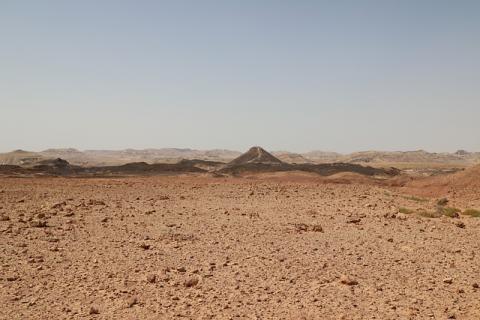Ought not our Lord to be crucified in Sodom and Egypt?

‘Ought not our Lord to be crucified in Sodom and Egypt, before he ascend to his last and most glorious appearance in the world?’ Asks Charles Worsley in his preface to Refreshing Drops (see a previous blog entry).
This first phrase stood out to me. Now where had I heard it before? Of course it is from the Bible: Revelation 11:8 reads Their bodies will lie in the street of the great city, which is figuratively called Sodom and Egypt, where also their Lord was crucified. It is describing the demise of two prophets.
So was our Lord crucified in those places? Clearly not; he was crucified at Jerusalem. A pedant will point out that Golgotha was technically without the city walls; victims of execution were deliberately terminated outside of the camp. Be that as it may, He was not crucified in those two places. The text itself, to make it obvious, says that Sodom and Egypt are figurative. So what does the verse mean?
Some may think it refers to Rome, the power which orchestrated the Messiah’s death. When Revelation was written around 95AD, Rome was truly the greatest city in the world and was responsible for the death of many a saint. Others suggest it may be Babylon which is described as a great city elsewhere in the book.
I believe ‘the great city’ is still Jerusalem. Although it’s a poor, divided place now, it is the most fought-over city on earth. To this day, different governments and people desire it, confirming its greatness, both politically, religiously and culturally. Jerusalem must therefore share some qualities with both Sodom and Egypt.
Both of these places in the Old Testament had reputations for sin, and pride in particular. They had both expressed hostility to the will of God in their respective times. Sodom was known for its incredible wickedness with its denizens’ attempted rape of two angels; Pharaoh refused to free his Hebrew slaves even though their God had made His desire for their release plain.
Egypt was a byword for pagan wisdom with its temples, gods and mumbling priests; Sodom was known for its riches and pursuit of godless pleasure. Both places were visited by God’s direct representatives, be that Christ in Egypt as a young man, or the angelic visitors camping in Sodom’s town square. Both places failed to recognise the great Ones sent among them. So what has this to do with Jerusalem?
Jerusalem and the Jerusalemites rejected and murdered the Anointed One; they failed to recognise that God was among them, preferring instead their own wisdom and pride. Truly, Jerusalem in AD30, or whichever year our Lord was crucified, was both Sodom and Egypt.
Image by Gidon Pico from Pixabay
- Log in to post comments


 Sunday Worship 10.45am & 6.00pm
Sunday Worship 10.45am & 6.00pm